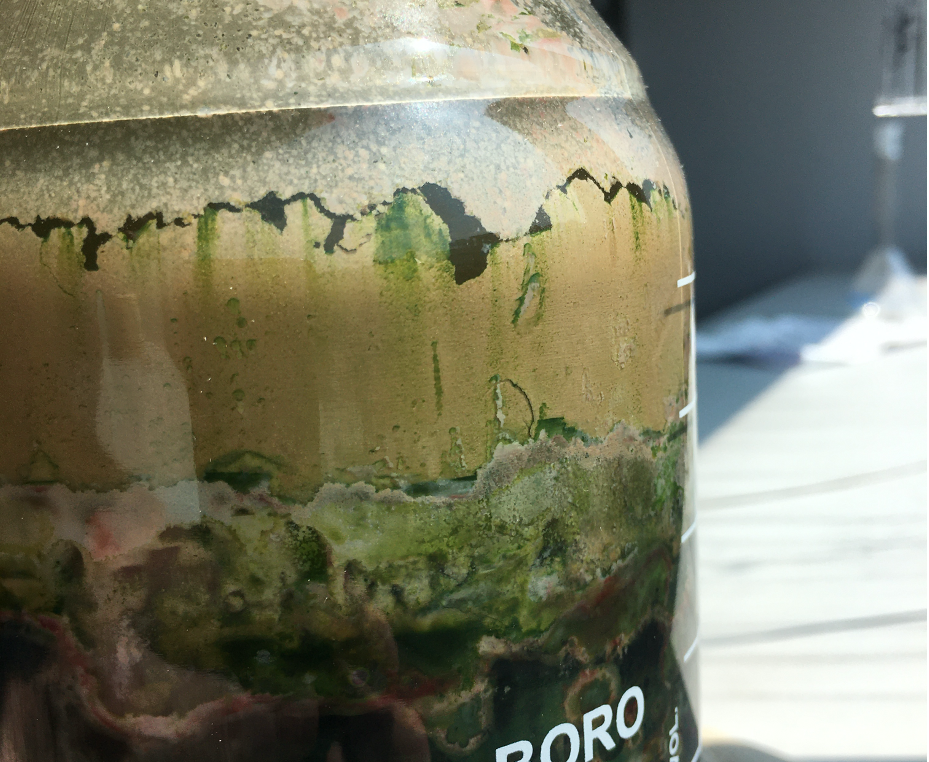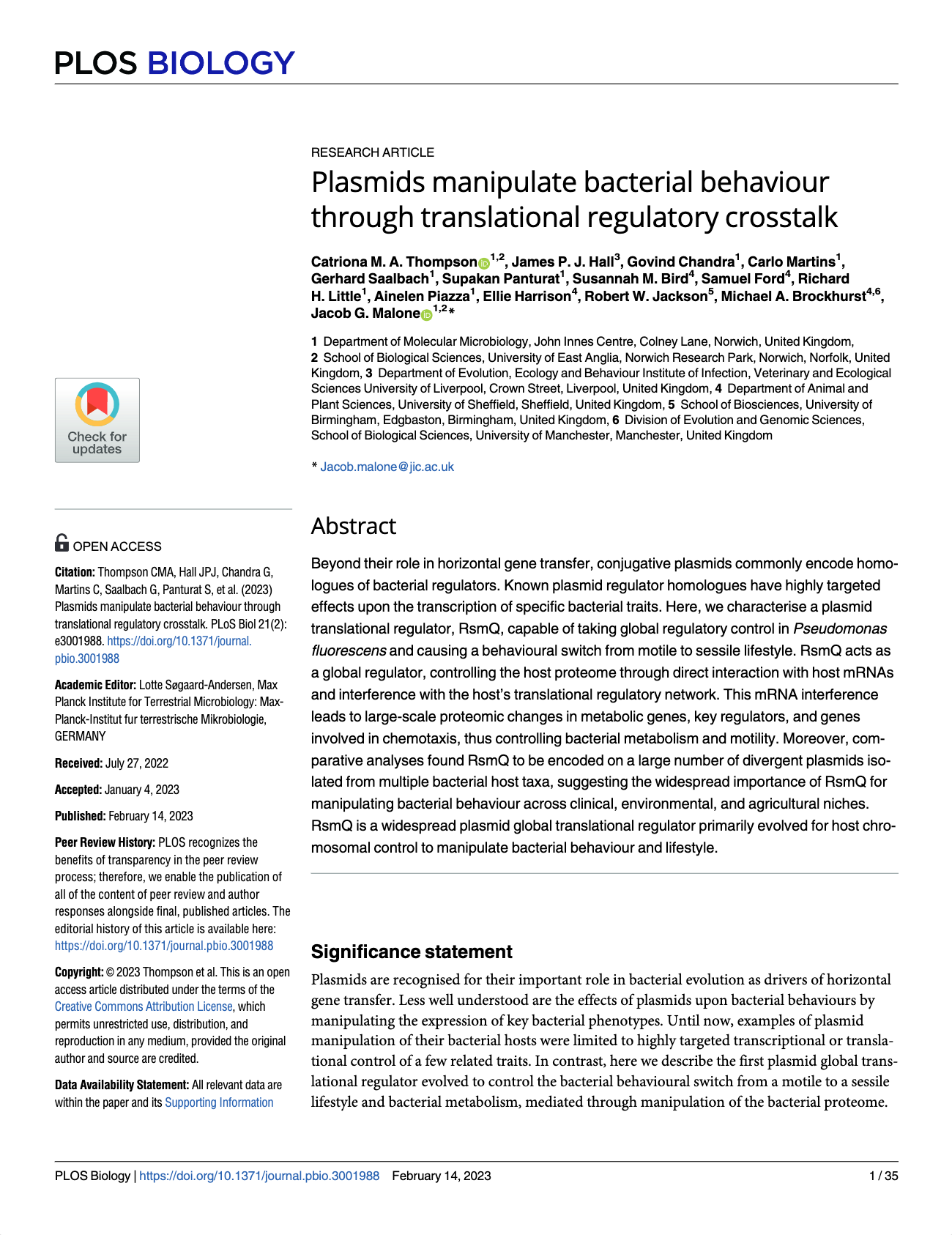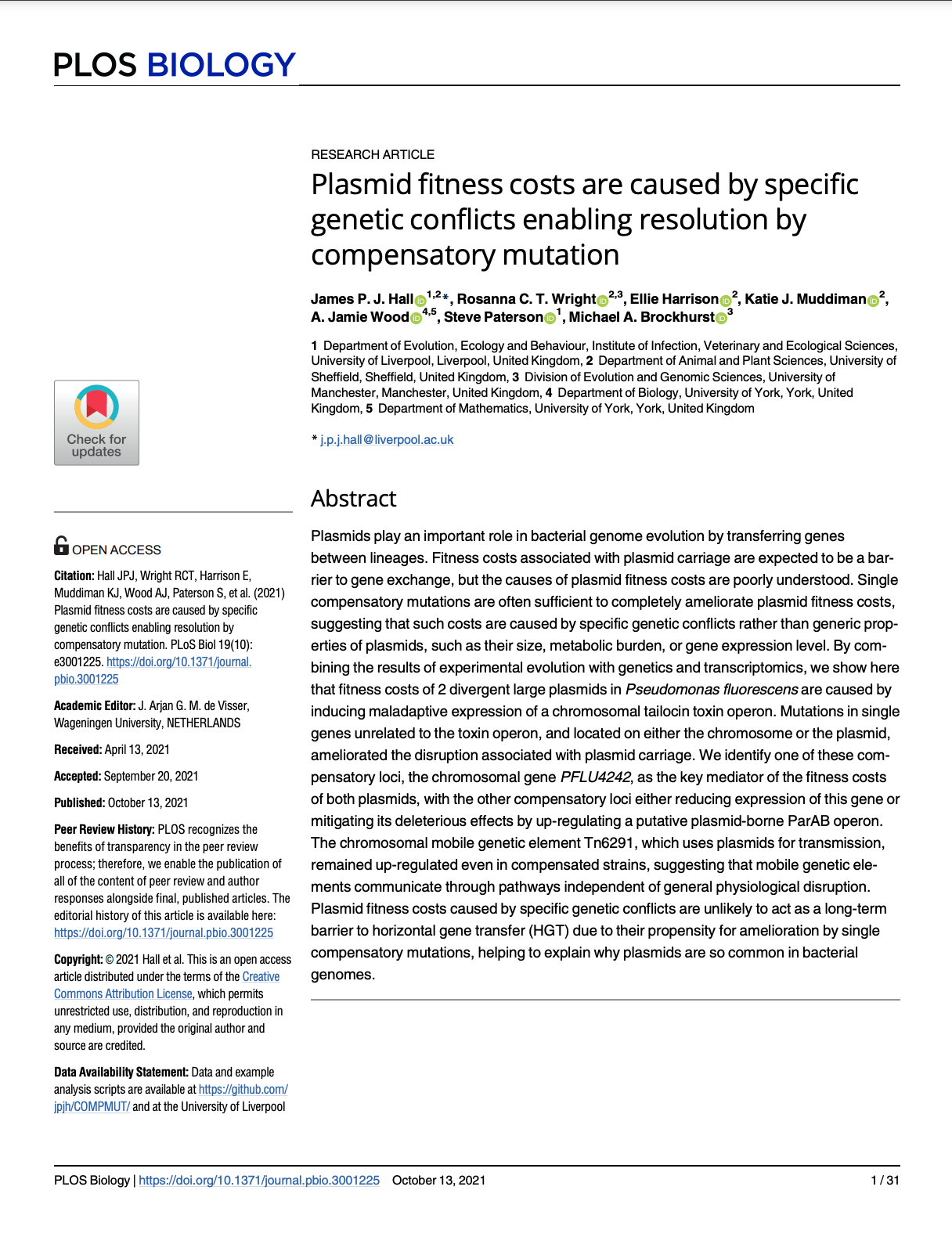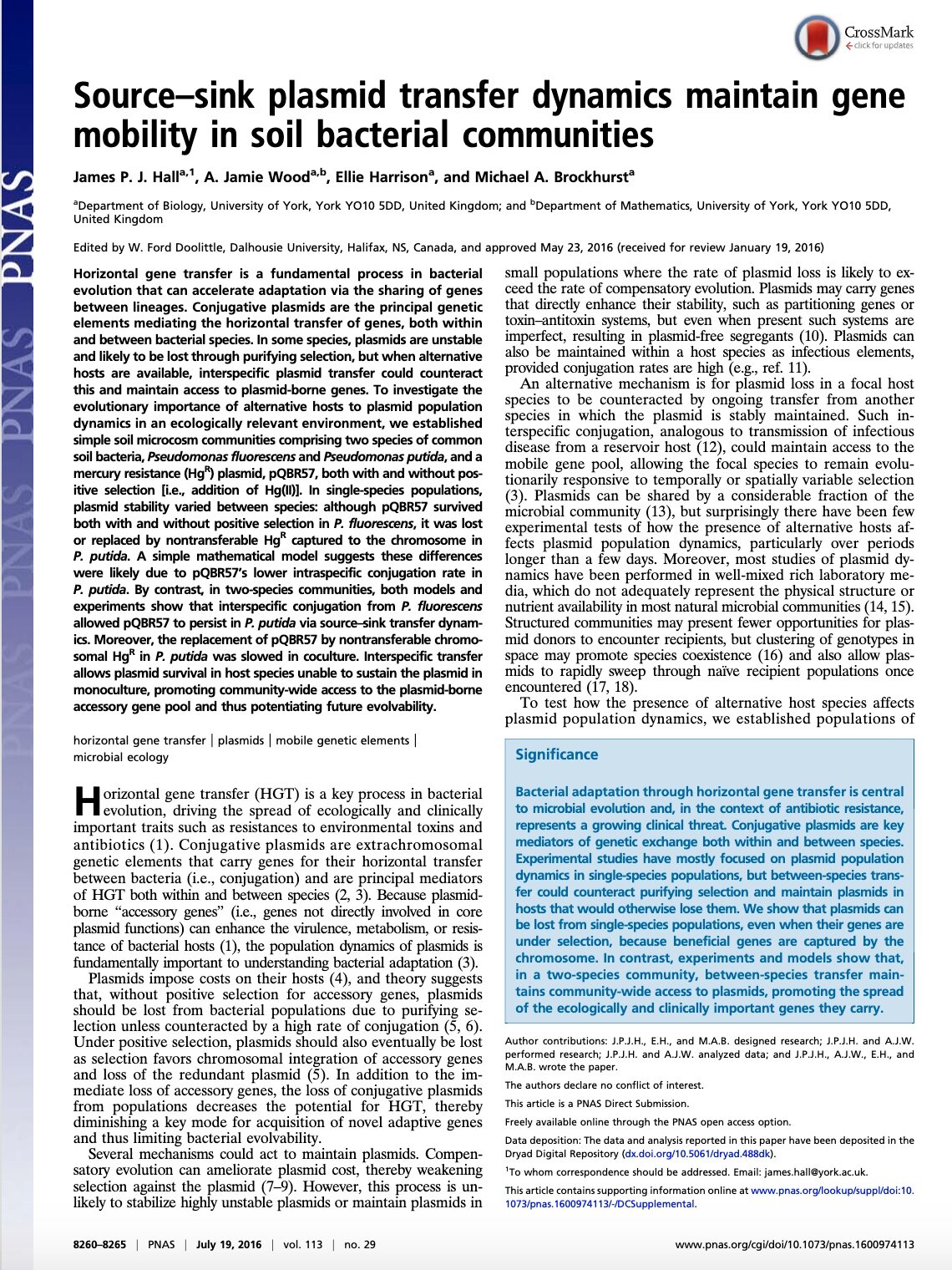Research
microbial evolution
Microbes are ubiquitous, diverse, versatile, and can evolve quickly in response to changes in their environments. For many challenges we face — from antimicrobial resistance, to plant health and productivity, to greenhouse gas emissions — microbes are both part of the problem and part of the solution. My group researches how and why microbes evolve. We are particularly interested in a remarkable and powerful mode of microbial evolution: horizontal gene transfer.
Horizontal gene transfer
Horizontal gene transfer is when individuals acquire genes from sources other than their parents, such as from neighbours or the local environment. Many of the bacterial traits we are interested in (for medical, industrial, environmental reasons and more) are spread between different species and strains of bacteria thanks to horizontal gene transfer.
ecology & evolution of Mobile genetic elements
In most cases, horizontal gene transfer is enabled by mobile genetic elements — entities which are adapted to moving DNA between cells. Amongst these, conjugative plasmids are thought to be particularly important vehicles of gene exchange. But plasmids are also entities evolving in their own right, and they don't always get along with the bacteria that carry them, resulting in conflicts. Our aims to understand these interactions and their consequences, using experimental evolution, molecular biology, and genomics.
Science communication
I like talking about science. I've produced several science comics. Once I made a giant trypanosome for a Mardi Gras parade.
The science comic I’m most proud of is Luna & Simon: Bizarre Bacteria and Peculiar Plasmids. Read it here!
Click here to see a full list of my science comics.
African trypanosome antigenic variation
African trypanosomes undergo rapid within-host evolution of their surface coat to escape their hosts' adaptive immune systems. This amazing survival strategy was the subject of my PhD at the University of Glasgow, and I have a long-standing interest in how trypanosomes deploy a diversity phenotype to such great effect.
Microbial diversity
Microbiology is fascinating because it brings mystery to the mundane. That handful of soil contains a complex ecosystem with a biological richness we are only just beginning to understand. That muddy puddle is full of predators, prey, symbioses, and competition. The microscope revealed that life on earth goes so much deeper than our eyes can see, and now the genomics revolution is revealing how dynamic, resilient, and creative the microscopic world can be.
Anybody can start to explore the microbial world! It doesn’t have to be expensive or complicated. Some ideas:
Get a Foldscope microscope and see what you can find.
Make a Winogradsky column and watch it develop.
Swab and Send some of your local microbes for analysis.
Collaborators, co-investigators, co-conspirators
I made this rather chaotic slide at the end of 2024 to summarise some of the various projects I and people in my group are involved in. It’s not exhaustive and it’s out-of-date already — apologies to all those I couldn’t fit on — but it gives an idea of the themes and projects in our research.
You can read more about my current lab group here.















